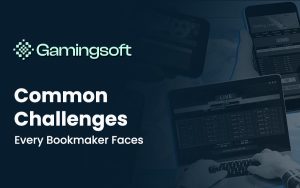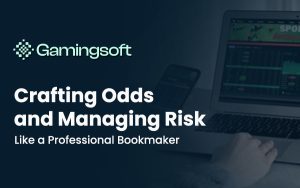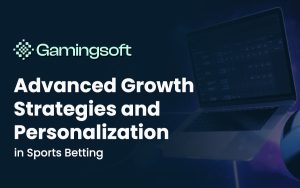In 2025, the online casino industry is more competitive than ever. The digital landscape continues to evolve, player expectations are higher, and marketing regulations are stricter. For operators, standing out now requires more than flashy ads — it demands a smarter, data-driven approach that builds trust, drives engagement, and keeps players coming back.
Today’s players aren’t just chasing bonuses. They want transparency, security, and a brand experience that feels personal. That means iGaming marketing in 2025 isn’t about volume — it’s about precision. It’s about delivering the right message, through the right channel, at the right time.
Recent studies from LUT University and Theseus.fi show that personalization and omnichannel strategies now outperform traditional advertising by more than 35%. The most successful operators are those who integrate storytelling, behavioral data, and lifecycle marketing into a unified digital ecosystem.
If you’re building or scaling your iGaming brand this year, here are the online casino marketing strategies that actually work in 2025 — proven, measurable, and player-first.
Strategy 1 – Personalization and Data-Driven Campaigns
In a saturated market, personalization isn’t optional — it’s survival. Every player has unique motivations: some chase jackpots, others enjoy live dealer games, and many simply seek entertainment. Knowing who your players are and how they behave allows you to create experiences that resonate.
Data-driven marketing uses analytics, AI, and behavioral segmentation to deliver messages tailored to individual interests. For example, showing a slot enthusiast new slot promotions or sending a personalized bonus reminder to a returning user increases engagement rates by up to 60%.
A DIVA Portal study on data ethics in digital marketing highlights the importance of transparent data use. Players are more likely to share personal data if they understand how it improves their experience.
In practice, iGaming brands use CRM tools and predictive analytics to customize:
- Email recommendations based on favorite games,
- Push notifications triggered by inactivity, and
- Targeted loyalty offers tied to deposit behavior.
This approach transforms generic marketing into meaningful communication. Learn how to apply personalization frameworks in your campaigns with our guide on “iGaming Digital Marketing Tips“.
Strategy 2 – Omnichannel Promotion and Social Engagement
Players interact with casino brands across multiple platforms — websites, apps, emails, social media, and even affiliate sites. That’s why omnichannel marketing is essential. It ensures your brand’s voice, visuals, and offers stay consistent everywhere your audience connects.
According to a DIVA Portal thesis on social media engagement, multi-channel consistency increases conversion probability by 28%. But omnichannel marketing isn’t just about being present everywhere — it’s about integrating those touchpoints seamlessly.
Here’s how leading iGaming brands execute it:
- Social Media Campaigns: Engage communities on TikTok, YouTube, and X (Twitter) with highlights, behind-the-scenes footage, and influencer collaborations.
- Email Automation: Use newsletters for bonus updates, personalized promotions, and cross-channel retargeting.
- In-App Messaging: Send dynamic offers triggered by player actions.
For best practices on execution, check our articles on “How to Promote Your iGaming Business on Social Media” and “The Right Way to Promote Your iGaming Business via Email Marketing“.
An effective omnichannel strategy creates a unified player experience that feels personal, engaging, and trustworthy — ultimately boosting both acquisition and retention.
Strategy 3 – Influencer Partnerships and Brand Trust
Influencers are reshaping how iGaming brands reach audiences. In 2025, streamers and content creators on Twitch, YouTube, and Instagram hold immense influence over player communities. Their opinions carry credibility that paid ads can’t buy.
Partnering with influencers lets casinos tap into existing trust networks. Players are more receptive to authentic recommendations than polished advertising. But success here depends on alignment — not every influencer fits every brand.
As detailed in “How Influencer Marketing in iGaming Builds Trust“, iGaming operators should prioritize:
- Transparency: Clear disclosure of partnerships to maintain compliance and integrity.
- Authenticity: Allow creators creative freedom to express genuine opinions.
- Community Fit: Choose influencers who understand gaming culture and your target audience.
Academic research from Theseus.fi supports this: players value social credibility more than financial incentives when deciding which platforms to trust.
When executed correctly, influencer marketing bridges emotional engagement with performance marketing — driving both visibility and conversions.

Strategy 4 – Loyalty, Retention, and Lifecycle Marketing
Acquiring new players is expensive. Retaining them is far more profitable. The average cost of acquisition (CAC) in the iGaming industry has risen 22% since 2022, making retention a top priority for 2025.
Lifecycle marketing focuses on nurturing player relationships across different stages — from registration to reactivation. The goal isn’t just to retain, but to increase lifetime value (LTV).
Effective retention strategies include:
- VIP Programs: Reward top spenders with exclusive benefits and access.
- Gamified Progression: Create challenges, streak bonuses, and achievement tiers.
- Personalized Re-Engagement: Target inactive players with custom bonuses or event invites.
Research from LUT University emphasizes that habit-forming marketing — done ethically — strengthens long-term loyalty. The key is to make engagement feel rewarding, not manipulative.
For a deeper look at platform-level retention tactics, explore “Key Strategies for Running an iGaming Platform“.
Strategy 5 – Content and Funnel Integration
Content is still king — but in 2025, it must be integrated into your funnel strategy. High-performing casinos produce tailored content for each funnel stage:
- Top of Funnel (ToFu): Educational blogs, trend reports, and explainer videos to build awareness.
- Middle of Funnel (MoFu): Case studies, tutorials, and bonus breakdowns to nurture interest.
- Bottom of Funnel (BoFu): Testimonials, trust badges, and promotional pages that convert.
This approach ensures your content doesn’t just entertain — it drives measurable business goals.
As explained in “Effective iGaming Marketing Funnel Strategy“, integrating SEO, storytelling, and analytics helps convert organic visitors into loyal players.
Consistency is key. Keep your tone and visual identity unified across every page, post, and ad. When content feels cohesive, players recognize your brand instantly and associate it with credibility.
Strategy 6 – Continuous Optimization and Analytics
Marketing success doesn’t come from a single campaign — it comes from constant testing. The iGaming market evolves fast, and so should your strategy.
Continuous optimization means monitoring campaign performance across all channels, analyzing what works, and reallocating resources dynamically. Key metrics to track include:
- CPA (Cost per Acquisition)
- CTR (Click-Through Rate)
- Retention Rate
- Player Lifetime Value (LTV)
Using machine learning tools, operators can even forecast campaign success before launch by analyzing historical data. That’s why data visibility — across channels, devices, and player types — is critical.
Analytics aren’t just about tracking; they’re about transforming insight into action. Combine marketing dashboards, CRM data, and predictive modeling to make smarter budget and creative decisions.
Bonus Tip — Leveraging AI and Predictive Analytics in iGaming Marketing
Artificial Intelligence (AI) has become a game-changer for casino marketing. It automates processes, enhances personalization, and predicts player behavior with incredible accuracy.
By using predictive analytics, iGaming operators can:
- Identify at-risk players before they churn,
- Offer real-time personalized bonuses,
- Optimize ad placements based on audience response, and
- Adjust budgets dynamically for maximum ROI.
For instance, AI-driven chatbots handle player inquiries instantly while collecting behavioral data to improve retention strategies. Similarly, algorithmic models can predict which bonuses generate the highest engagement — saving both time and money.
A report from Theseus.fi highlights that operators using AI-powered segmentation enjoy a 25–40% increase in player retention compared to those using manual segmentation.
The takeaway? AI isn’t replacing marketers — it’s amplifying their effectiveness. The future of iGaming marketing belongs to those who can combine creativity with intelligent automation.
Grow Your iGaming Brand with GS Marketing
Having the right marketing strategy is only part of the equation. Execution — with consistency and precision — determines success. That’s where GS Marketing comes in.
GS Marketing helps iGaming operators design, implement, and optimize digital campaigns that align perfectly with business goals. From SEO and content marketing to influencer partnerships and analytics tracking, our solutions are tailored for measurable growth.
Whether you’re scaling a new casino brand or optimizing a mature platform, GS Marketing ensures every marketing dollar contributes to sustainable success.
Conclusion
The most effective online casino marketing strategies in 2025 combine personalization, data, and creativity. By understanding your players and integrating every touchpoint — from content to CRM — you can build stronger relationships and better results.
The future of iGaming marketing belongs to brands that stay agile, experiment boldly, and leverage technology responsibly. If you’re ready to transform your marketing approach into measurable performance, GS Marketing can help you make that happen.
FAQs About Online Casino Marketing Strategies
-
What is the average marketing budget for a new online casino in 2025?
Marketing budgets vary widely depending on region and scale. On average, startups allocate 25–35% of their total operational cost to marketing during the first year. White-label operators tend to spend less because branding and campaign frameworks are often included in their provider packages.
-
How can localization improve online casino marketing performance?
Localization helps brands connect culturally with players by using local payment methods, language nuances, and regional events. Casinos that adapt their promotions and communication tone to specific markets often see 30–50% higher engagement compared to one-size-fits-all campaigns.
-
When is the best time to launch major casino marketing campaigns?
The ideal timing depends on your target market’s seasonality. For example, engagement peaks during major sporting events, holiday seasons, and national lotteries. Planning campaigns around these moments amplifies exposure and player acquisition rates.
-
What legal limitations affect online casino marketing in 2025?
Advertising regulations vary by jurisdiction. Many countries require gambling disclaimers, prohibit targeting minors, and restrict bonus promotions. It’s crucial to ensure every campaign follows local laws — especially when using influencers or social ads to promote gambling-related content.
-
What future trends will shape online casino marketing beyond 2025?
Emerging technologies like Web3 loyalty systems, blockchain-based player verification, and immersive VR casinos will redefine engagement. Meanwhile, AI-powered storytelling and predictive analytics will continue to evolve, making campaigns even more adaptive and individualized.






